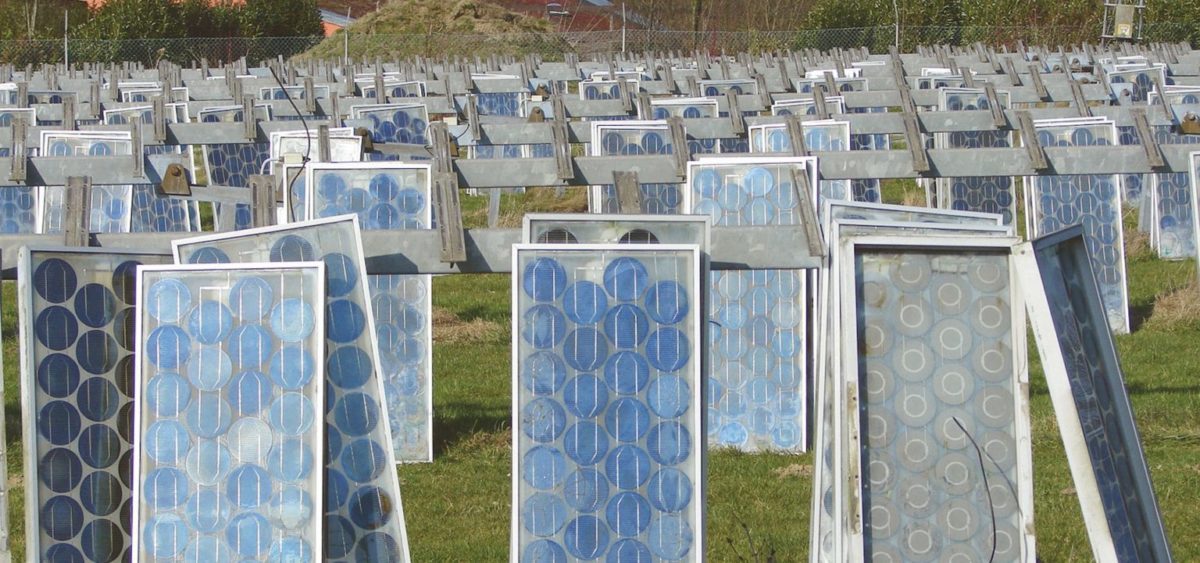From pv magazine India
India could have 21 kilotons of PV module waste from new solar installations if the nation reaches a cumulative 287 GW of installed solar capacity by 2030, from 40 GW in 2020. The PV waste generated will be due to early failures or damage during transportation, installation, and operation, according to a new study.
The report was developed in cooperation with the EU India Technical Cooperation Project (IDOM), European solar trade body SolarPower Europe, European take-back and recycling association PV Cycle, and the National Solar Energy Federation of India (NSEFI).
To project the amount of PV waste generated in India by the year 2030, the researchers estimated the annual and cumulative growth of the installed PV capacity in India under three scenarios. In addition, they made a number of assumptions about PV module weight, PV annual replacement rates, and PV module damages during transportation and construction.
They said that by 2030, India will generate a cumulative mass of PV module waste of 11 kilotons in the “low scenario,” 21 kilotons in the “medium scenario,” and 34 kilotons in the “high scenario.” The waste generated due to the end of life of the PV modules would likely start to accumulate after 2040 and will rapidly become the most relevant waste source.
Compared to current installation levels, the annual PV market is expected to grow significantly across all three scenarios investigated in the study. By 2030, cumulative installed capacity experiences a multifold growth across all scenarios. Under the low and medium scenarios, cumulative capacity by 2030 reaches 187 and 287 GW, respectively, up from 40 GW in 2020. The high scenario capacity reaches 400 GW by 2030, in line with government ambitions. Assuming that PV systems installed in the 2020-30 period will have a lifetime of at least 30 years, any capacity installed during this period will not reach the end-of-life stage until at least 2050.
Given that ground-mounted solar constitutes the vast majority of PV capacity, and that the residential segment is only a fraction of rooftop installations, the report concludes that the greatest bulk of end-of-life PV waste will be derived from B2B relations.
Popular content
PV waste management
In India, there is no policy for dealing with the waste generated by PV modules, as they are not included in e-waste or in hazardous waste regulations. The report outlines different overall policy approaches for PV waste management in India. The business-as-usual scenario maintains the current status quo. In an improved business-as-usual scenario, a landfill ban is introduced, but the end-owner retains end-of-life management responsibility. Under an “extended producer responsibility scenario,” on top of a landfill ban, the producer would have legal responsibility for the end-of-life management of the product.
The authors recommend the extended producer responsibility approach as the best one for the Indian context, as it constitutes the most effective way to perform sound PV waste management. They advise Indian policymakers to implement an extended producer responsibility law for PV modules that would set the principle of a “producer responsibility” for PV modules and, where required, other products of a PV system, such as inverters and batteries.
EU India TCP, NSEFI, SolarPower Europe, and PV Cycle have designed a questionnaire to understand the notion of Indian stakeholders (especially manufacturers and developers) on different aspects of the PV waste-management mechanism. Thirteen key questions were posed to the stakeholders to seek their input. Around 71% of the stakeholders were willing to take the responsibility for the end-of-life phase of PV modules, inverters, and batteries sold into the Indian market. Among the manufacturers who participated in this survey, almost 80% of them were willing to take this responsibility.
Only half of the survey respondents said that they believe that PV recycling will be profitable in the coming years. Most of them cited scale, market for the recycled materials, and incentives for recycling, as well as the diversity of PV modules and collection costs, as the possible reasons for non-profitability.
Around 71% of the interviewed stakeholders said that they feel that the recycling of inverters is economically viable in India, while only 35% said that they think the recycling of lithium-ion batteries is viable in India. Imposing landfill bans and taxes on it, while enforcing stricter extended producer responsibilities, are the two main factors the stakeholders said should be enforced by the government to push the market for a circular economy. Finally, 86% of the respondents said that targets for a minimum amount of recycled content should be included while manufacturing new modules, as they claimed that this could help in achieving recycling-related goals.
This content is protected by copyright and may not be reused. If you want to cooperate with us and would like to reuse some of our content, please contact: editors@pv-magazine.com.



By submitting this form you agree to pv magazine using your data for the purposes of publishing your comment.
Your personal data will only be disclosed or otherwise transmitted to third parties for the purposes of spam filtering or if this is necessary for technical maintenance of the website. Any other transfer to third parties will not take place unless this is justified on the basis of applicable data protection regulations or if pv magazine is legally obliged to do so.
You may revoke this consent at any time with effect for the future, in which case your personal data will be deleted immediately. Otherwise, your data will be deleted if pv magazine has processed your request or the purpose of data storage is fulfilled.
Further information on data privacy can be found in our Data Protection Policy.